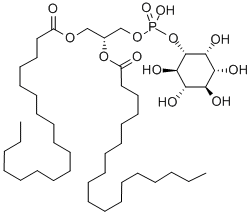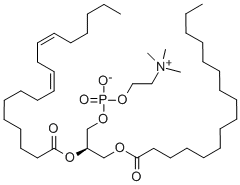Phospholipids
| Pack Size | Price | Stock | Quantity |
| 1KIT | RMB11037.10 | In Stock |
|
| others | Enquire |
PRODUCT Properties
| Flash point: | 14 °C |
| storage temp. | -20°C |
| form | liquid |
Description and Uses
Lipid substances, containing a phosphate group and one or more fatty acid residues, which are essential components of cell membranes. Hydrolysis yields fatty acids, phosphoric acid, and a base. They are amphoteric with a polar and a nonpolar region. Lecithins, cephalins, and related com_x0002_pounds are based on a glycerol backbone, with a phosphate group. In lecithin (phosphatidylcholine), R0 and Rv are fatty acid residues, usually one saturated and the other unsaturated. In the cephalins, ethanolamine (H2NCH2CH2OH) or serine replaces choline. They are used in the food industry as surfactants, emulsifiers, and antioxidants. In sphingomyelins, R is a fatty acid residue, usually tetracosanoic acid. They occur abundantly in brain tissues in association with cerebrosides, which are similar. On hydrolysis they split into choline, sphingosine, phosphoric acid, and a fatty acid.
phospholipids (phosphatides) is used topically as a moisturizer and emollient because of their inherent compatibility with skin lipids. In general, natural phospholipids have a short-lived effect when topically applied, and are a primary material in the manufacture of liposomes. Phospholipids are complex fat substances that, together with protein, form the membrane of all living cells.
Safety
| Symbol(GHS) |    GHS02, GHS07, GHS08 |
| Signal word | Danger |
| Hazard statements | H225-H302+H332-H315-H319-H336-H351-H361d-H373 |
| Precautionary statements | P210-P261-P281-P305+P351+P338 |
| Hazard Codes | F,Xn |
| Risk Statements | 11-22-38-40-48/20/22 |
| Safety Statements | 16-36/37 |
| RIDADR | UN 3316 9 |



